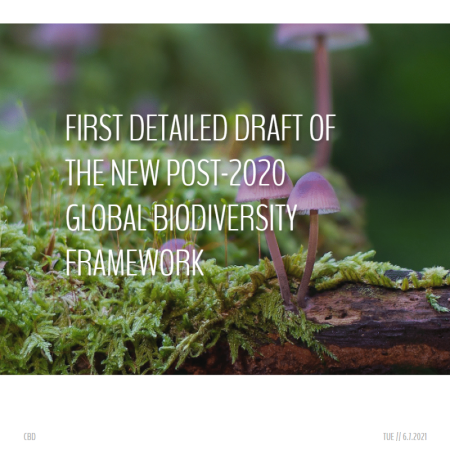
The first draft of a new global framework on biodiversity was released by the Secretariat of the United Nations Convention on Biological Diversity (CBD) to guide actions around the world until 2030 for the conservation and protection of nature and its essential services to people. At the end of the summer the draft framework will be further refined during online negotiations, before being presented for consideration at the next CBD meeting of its 196 parties at COP-15, in Kunming, China.
The framework is based on the Strategic Plan for Biodiversity 2011-2020 and includes 21 goals and 10 "targets" proposed for 2030 to "live in harmony with nature" by 2050. Key objectives include:
- Guarantee that at least 30% of land and sea areas globally are preserved
- Prevent or decrease the rate of introduction and establishment of invasive alien species by 50%
- Diminish the nutrients lost in the environment by at least 50%, pesticides by at least 2/3 and eliminate plastic waste discharges
- Implement ecosystem-based approaches to mitigate and / or adapt to climate change, and ensure that these efforts do not have negative impacts on biodiversity
- Redirect, reuse, reform or eliminate incentives harmful to biodiversity in a fair and equitable way, reducing them by at least $ 500 billion per year
- Rise financial resources from all sources by at least $ 200 billion per year and increase international financial flows to developing countries by at least $ 10 billion per year.
The framework assumes that these actions are implemented to reduce threats to biodiversity, and to ensure that biodiversity is used sustainably to meet people's needs. Progress will be monitored transparently and responsibly with appropriate inventory exercises to guarantee that, by 2030, the world is on track to achieve the 2050 Vision for Biodiversity.
The framework is complementary to the 2030 Agenda for sustainable developments, and it considers the long-term strategies and objectives of other multilateral environmental agreements, including the Rio Conventions related to biodiversity.
More information can be found here.